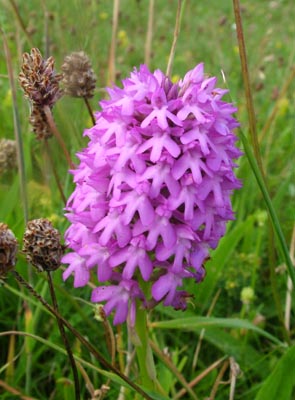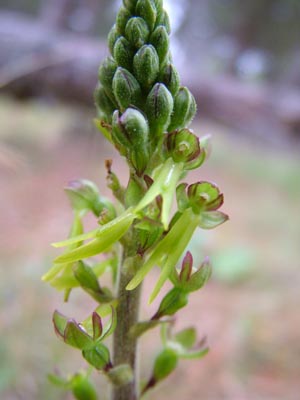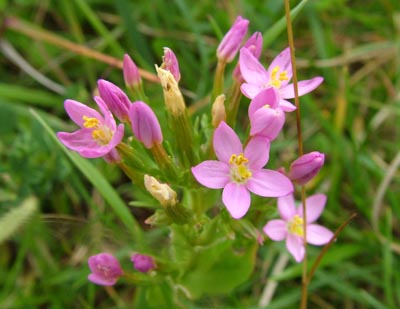This is an excellent location for scarce butterflies and plants.
Sunny and warm.

The Pyramidal Orchid - Anacamptis pyramidalis - is the first flower you see on arrival. The car park is surrounded by them. This must be one of the few places where people play football in a sea of orchids.
Two woodland orchids. A green Helleborine (left) and Common Twayblade (right). I have only ever found two specimens of Helleborine in this area. Unfortunately, this one is very near a footpath and usually has its head lopped off before the flowers open. The Twayblade, on the other hand, is very numerous and is so visually insignificant that they are always left alone. I have been alerted to the presence of Twayblades quite near my home, so I'm off to investigate those on Sunday.

The Six-spot Burnet is emerging in numbers, though I still saw numerous occupied cocoons on grass stems. The left-hand image also contains a couple of Cinnabar larvae, and it looks like the right-hand moth has just emerged from the chrysalis in the foreground.



This male Common Blue was kind enough to rest on a piece of grass. I was actually following a female Small Blue at this point, but it disappeared when I took my eye off it.
Two very flighty butterflies. Small Heath (left) and Dark Green Fritillary (right). I tried to get here before they got too heated by the sun, but they were still reluctant to land and even more reluctant to stay still when they landed. You can (just) make out the dark green patch on the underwing, which gives the butterfly its name.


Common Storksbill - Erodium cicutarium - was growing in the middle of the footpath. Flower about 1 cm.across.

The 'Bluebell' of my youth. It's more correctly known as Harebell - Campanula rotundifolia.
One of only a couple of places where I've found Knotted Pearlwort - Sagina nodosa.
Two yellows. Lady's Bedstraw - Galium verum - and Mouse-ear Hawkweed - Pilosella officinarum.


I had hoped this was Sea Centaury, given the location, but it's just a small specimen of Common Centaury - Centaurea erythraea.
Two specimens from down at the dunes. Sea Rocket - Cakile maritima - and Wild Carrot - Daucus carota.
No trip to this area is complete without smelling the delicately scented leaves of the Wild Thyme - Thymus polytrichus.
I searched the woodland behind the dunes for signs of Silver-washed Fritillary, but no luck. I did find Bindweed - Calystegia sylvatica - and Hardheads - Centaurea nigra - in flower.

And lastly a Harvestman in its usual pose with at least one leg (right 2) stuck out as a vibration detector.